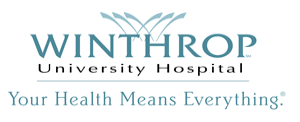Exhaled Nitric Oxide Levels in Infants and Young Children Infected With RSV or Other Viral Infections
| Status: | Withdrawn |
|---|---|
| Conditions: | Bronchitis, Infectious Disease, Pulmonary |
| Therapuetic Areas: | Immunology / Infectious Diseases, Pulmonary / Respiratory Diseases |
| Healthy: | No |
| Age Range: | Any - 4 |
| Updated: | 4/21/2016 |
| Start Date: | January 2010 |
| End Date: | June 2011 |
A Prospective Study Measuring Exhaled Nitric Oxide Levels in Infants and Young Children Admitted to the Hospital for Respiratory Syncytial Virus (RSV) or Other Viral Lower Respiratory Tract Infections
The fraction of exhaled nitric oxide (FeNO) in expired air is a reliable measure of airway
inflammation and has been used as a marker in asthma and other respiratory illnesses such as
primary ciliary dyskinesia, bronchopulmonary dysplasia (BPD), liver cirrhosis, chronic
obstructive pulmonary disease (COPD), cystic fibrosis (CF). Although, some exquisite bench
research experiments have demonstrated stimulation of nitric oxide production in respiratory
epithelial cells infected with RSV, there is a paucity of clinical data regarding levels of
feNO in viral respiratory illness and specifically RSV.
The investigators conducted a pilot study from the fall of 2007 until October of 2009,
looking at FeNO levels in RSV infected patients and compared it to non-RSV viral infections.
The investigators recruited a total of 28 RSV positive and 1 RSV negative subjects, as well
as 4 control subjects. The investigators found FeNO values not statistically significant
between the study group (the two-tailed p=0.09, considered not quite significant), but there
was a trend of higher FeNO values in the non-RSV group when compared to the RSV group. A
larger sample may detect a statistically significance between these 2 groups.
Objectives:
i. To determine if the fraction of exhaled nitric oxide (feNO) is elevated in hospitalized
pediatric patients with viral lower respiratory illness when compared with normal subjects
without respiratory symptoms.
ii. To determine if there is a difference in feNO level between RSV and non-RSV infection in
hospitalized pediatric patients with viral lower respiratory illness.
Method of feNO measurement utilized the offline options for preschool children & infants
appropriate for age as described in the 2005 Joint Statement of the American Thoracic
Society & the European Respiratory Society when discussing tidal breathing techniques with
uncontrolled flow rate.
The investigators plan that our sample sizes for the RSV+ and control groups will be, by
design, three times as large as the RSV- group. In order to achieve 80% power, the
investigators will then require 45 control and 45 RSV+ patients, and 15 RSV- patients
inflammation and has been used as a marker in asthma and other respiratory illnesses such as
primary ciliary dyskinesia, bronchopulmonary dysplasia (BPD), liver cirrhosis, chronic
obstructive pulmonary disease (COPD), cystic fibrosis (CF). Although, some exquisite bench
research experiments have demonstrated stimulation of nitric oxide production in respiratory
epithelial cells infected with RSV, there is a paucity of clinical data regarding levels of
feNO in viral respiratory illness and specifically RSV.
The investigators conducted a pilot study from the fall of 2007 until October of 2009,
looking at FeNO levels in RSV infected patients and compared it to non-RSV viral infections.
The investigators recruited a total of 28 RSV positive and 1 RSV negative subjects, as well
as 4 control subjects. The investigators found FeNO values not statistically significant
between the study group (the two-tailed p=0.09, considered not quite significant), but there
was a trend of higher FeNO values in the non-RSV group when compared to the RSV group. A
larger sample may detect a statistically significance between these 2 groups.
Objectives:
i. To determine if the fraction of exhaled nitric oxide (feNO) is elevated in hospitalized
pediatric patients with viral lower respiratory illness when compared with normal subjects
without respiratory symptoms.
ii. To determine if there is a difference in feNO level between RSV and non-RSV infection in
hospitalized pediatric patients with viral lower respiratory illness.
Method of feNO measurement utilized the offline options for preschool children & infants
appropriate for age as described in the 2005 Joint Statement of the American Thoracic
Society & the European Respiratory Society when discussing tidal breathing techniques with
uncontrolled flow rate.
The investigators plan that our sample sizes for the RSV+ and control groups will be, by
design, three times as large as the RSV- group. In order to achieve 80% power, the
investigators will then require 45 control and 45 RSV+ patients, and 15 RSV- patients
Inclusion Criteria:
- Consecutive children admitted to WUH with a diagnosis of bronchiolitis, viral
pneumonia or other significant respiratory viral infection
- The control group will include patient within the same age range as the study group
who comes to the pediatric office for a well child visit and has none of the
exclusion criteria listed below
Exclusion Criteria:
- Subjects who do not meet the diagnosis for bronchiolitis, viral pneumonia or other
significant respiratory viral infection; all patients with underlying diagnosis of
asthma/RAD, recurrent wheezing, "recurrent bronchiolitis", allergic rhinitis, atopy,
any chronic lung disease, hypertension, heart failure, kidney failure receiving or
not dialysis, pulmonary hypertension, primary ciliary dyskinesia, bronchiectasis,
alveolitis, lung transplant rejection, pulmonary sarcoidosis, chronic cough (i.e.
greater four weeks), systemic sclerosis, hypersensitivity, cystic fibrosis, HIV,
sickle cell anemia, cardiac pulmonary bypass, liver cirrhosis, alpha-1 anti-trypsin
disease and interstitial lung.
We found this trial at
1
site
Winthrop University Hospital Founded in 1896 by a group of local physicians and concerned citizens,...
Click here to add this to my saved trials
